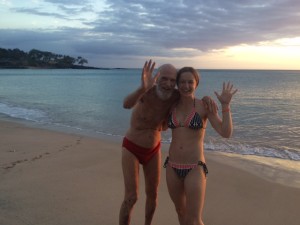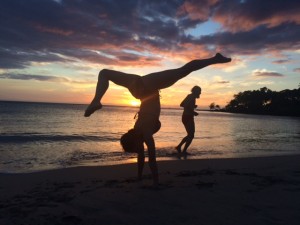“Adrenal fatigue” is a hot topic among health experts. We are a society facing an incredible amount of stress and suffering the consequences, physically and mentally.
I reached out to Dr. Nick Zyrowski, founder of NuVision Excel, to explore the very real consequences of prolonged stress on the body. We had an engaging conversation about how to de-stress through positive psychology and meditation, which I encourage you to listen to here on his latest radio show.
Here he discusses adrenal dysfunction and shares 5 ways to optimize your adrenal health naturally.
“If you are like most people, you work hard and play hard. One day, you wake up and realize your body isn’t working like you think it should. You are tired all of time, relying on stimulants like caffeine to get you through the day. I’d like to think that this is an isolated incident, but it’s the reality for most of my patients,” says Dr. Zyrowski.
“It’s estimated that 85% of Americans suffer from adrenal fatigue. Adrenal dysfunction does not discriminate; it occurs in men and women of all ages. I see many people as young as early twenties experiencing adrenal fatigue. With no knowledge of its existence and not knowing what to do, the problem often snowballs and only gets worse.”
What is Adrenal Dysfunction?
“Adrenal dysfunction is a decrease in function of the adrenal glands that characteristically manifests as a reduced output or alteration in the diurnal pattern of adrenal hormone secretion including cortisol. People suffering from decreased adrenal function commonly complain of fatigue but may also experience sleep disruptions, weight changes, salt and/or sugar cravings, allergies, anxiousness, nervousness, low blood pressure and numerous other symptoms.
I’ve personally run dozens of adrenal tests and have reviewed hundreds. Most times, I find an inverse cortisol graph showing that the adrenal glands are shot. The reason it’s important to test your adrenals is because it’s difficult to manage what you can’t measure. Also, if you don’t know what the problem is, it’s near impossible to fix it. Once you identify the problem, and understand the severity of the problem, you can create a plan of action to get well.”
What causes Adrenal Dysfunction?
“Adrenal dysfunction results from continuous or sudden stress. Although stress is a natural part of life, the typical American lifestyle contains so many sources of stress that our bodies are unable to cope. Many people might think of stress in the way of emotional stress, but it comes in all varieties. Here are some of the major stressors that I see in my patients’ lives:
- Recurrent disease and illness
- Physical stress – injury, high physical demands, diet, surgery, tobacco/alcohol addiction, etc.
- Emotional stress – marriage, divorce, deaths, work, a new baby, financial, etc.
- Environmental stress – chemical pollution of air, water, food, etc.
Who hasn’t experienced one or all of these stressors? These are all normal parts of life, but unfortunately, we are living a fast-paced world, resulting in an onslaught of stress in our lives. Identify which of these you can remove from your life, and eliminate as many as possible. This isn’t a time for excuses because these things are affecting your health.”
5 Ways to Optimize Your Adrenal Health Naturally
If I don’t address lifestyle with my patients, taking vitamins and herbs to address the problem is useless. Poor lifestyle is the primary cause of adrenal dysfunction. In order to heal your adrenals, you must adapt these five lifestyle strategies:
- Moderate Exercise – 30 minutes, 5 -7 days per week
- Sufficient Sleep – ideal sleeping hours are between 10 p.m. – 9 a.m.
- Balanced Diet – high in vegetables and healthy fats, moderate protein, and low in processed carbohydrates
- Frequent laughter and deep breathing exercises
- Limit caffeine, alcohol, and refined sugars











